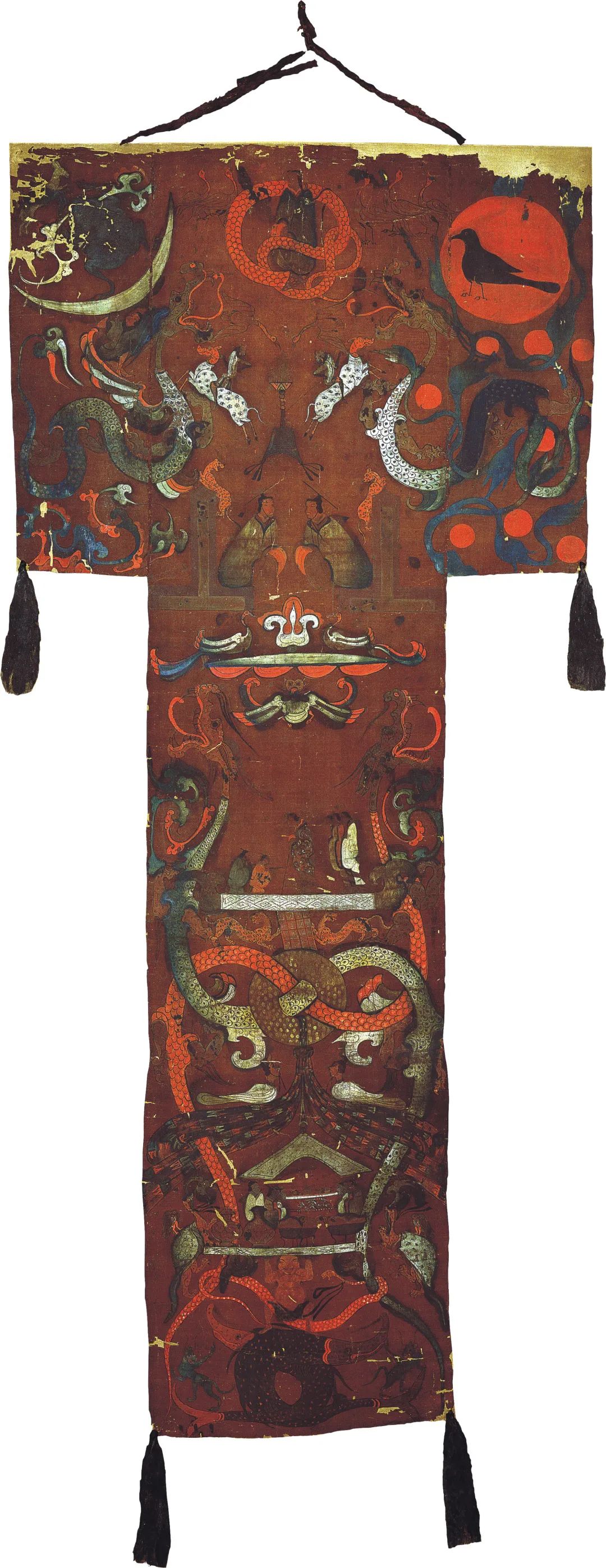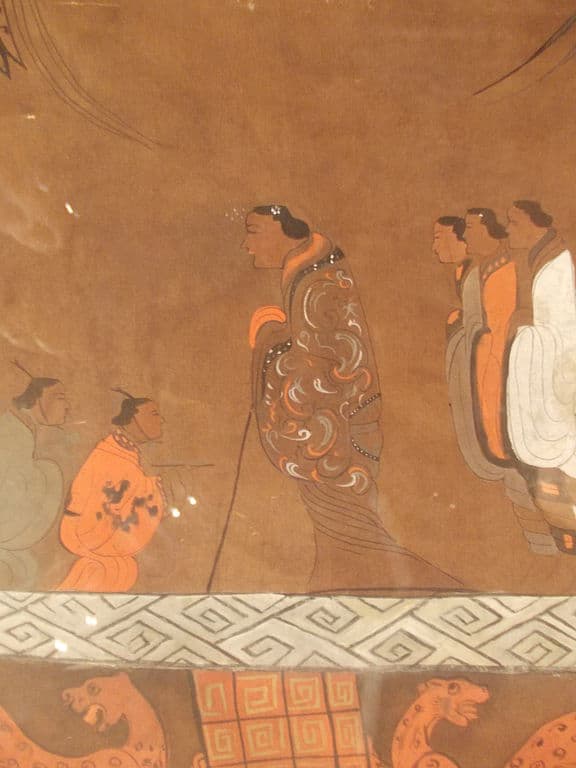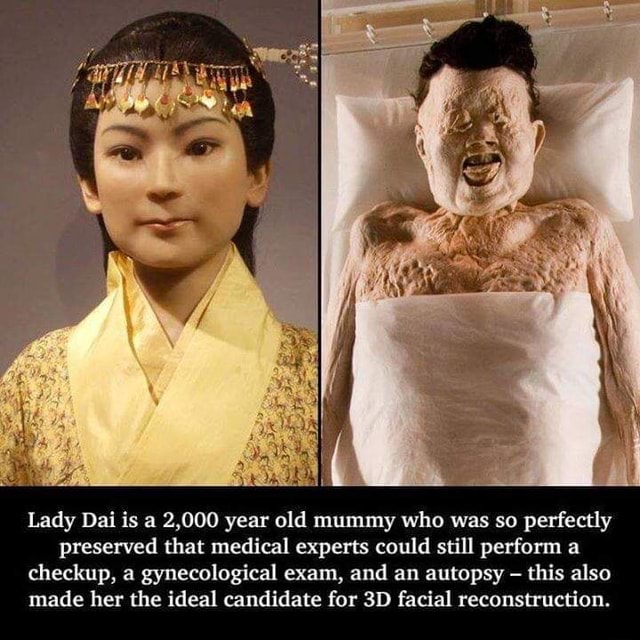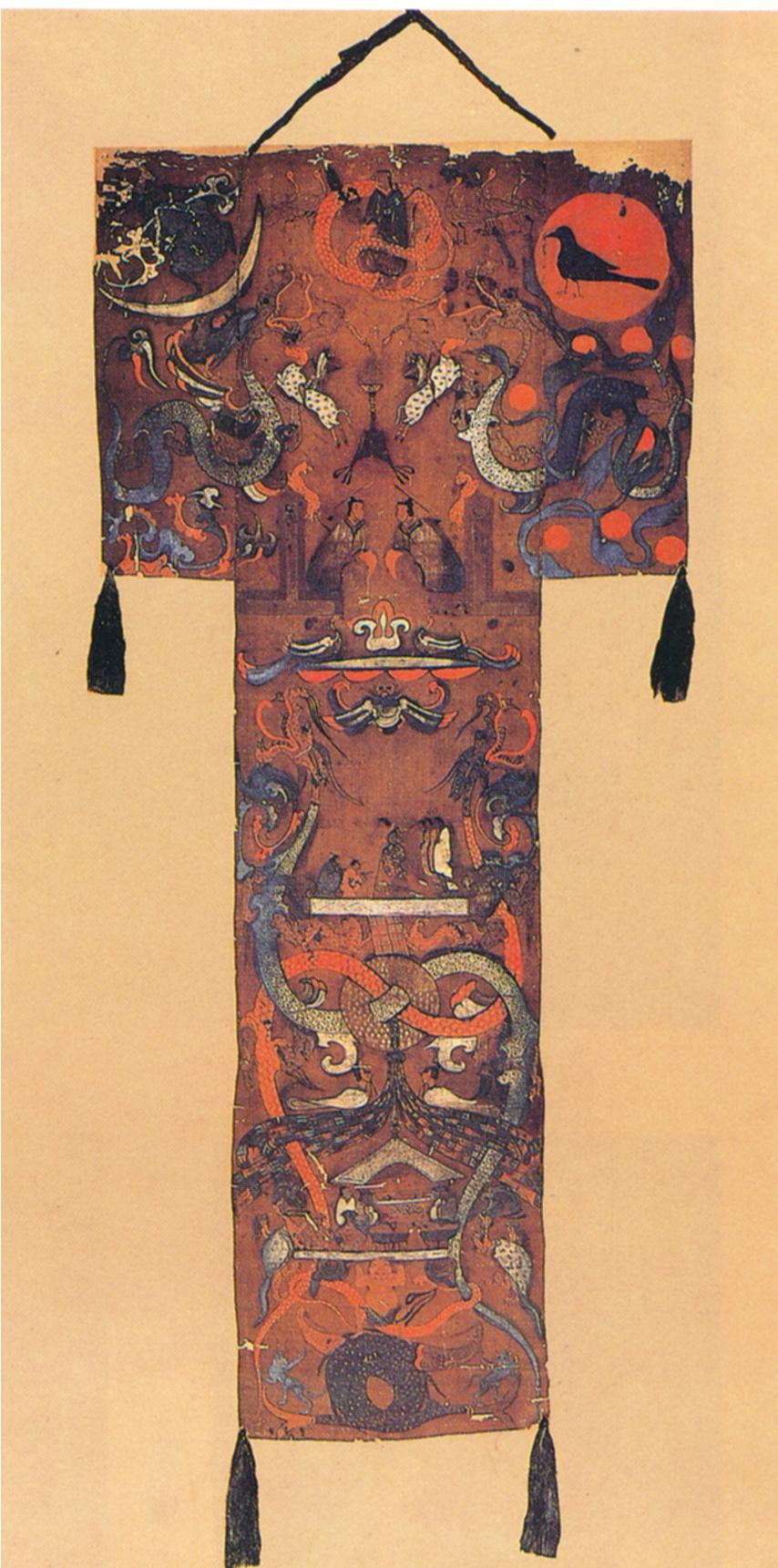
Han dynasty
Lady Dai's banner is important for two primary reasons. It is an early example of pictorial (representing naturalistic scenes, not just abstract shapes) art in China. Secondly, the banner features the earliest known portrait in Chinese painting. We can divide Lady Dai's banner into four horizontal registers.

Funeral banner of Lady Dai (Xin Zhui) (article) Khan Academy
Tomb 1 Lady Dai's underground wooden burial structure was divided into five compartments, including a central coffin chamber surrounded by four compartments on each side for burial furnishings. At the center of the tomb, Lady Dai was buried in a series of four nesting coffins.

Funeral Banner of Lady Dai (Han Dynasty) Asian Art History
Form: -The Funeral Banner of Lady Dai (Xin Zhui) was made in the 2nd century B.CE and is comprised of painted silk. -The quality and condition of the funeral banner is extraordinary it is one of the most famous archeological discoveries in history. -It was found in the Nesting coffins of Lady Dai. -Made from wood and had lacquered exteriors and.
:max_bytes(150000):strip_icc()/mawangdui_banquet-57b866785f9b58cdfda0bfd8.jpg)
Lady Dai's Funeral Banner 2200 Year Old Silk Tapestry
They may be "name banners" used to identify the dead during the mourning ceremonies, or they may have been burial shrouds intended to aid the soul in its passage to the afterlife. Lady Dai's banner is important for two primary reasons. It is an early example of pictorial (representing naturalistic scenes not just abstract shapes) art in China.

Lower Tier of painted Silk Banner from the Tomb of Lady Dai Mawangdui Ch'angsha, Hunan Province
Funeral Banner of Lady Dai Western Han dynasty, 168 B.C. Hunan Provincial Museum, Changsha see also: line drawing of the silk banner Lady Dai's painted silk banner is a precious window into Han-dynasty legends and funeral practice; it was carried in front of the funeral procession, then draped upon her coffin.

Questions concerning mortality in early China [2 of 3] The netherworld is closer to us than you
Tomb 1 Lady Dai's underground wooden burial structure was divided into five compartments, including a central coffin chamber surrounded by four compartments on each side for burial furnishings. At the center of the tomb, Lady Dai was buried in a series of four nesting coffins.

Funeral banner of Lady Dai (Xin Zhui) (article) Khan Academy
They may be "name banners" used to identify the dead during the mourning ceremonies, or they may have been burial shrouds intended to aid the soul in its passage to the afterlife. Lady Dai's banner is important for two primary reasons. It is an early example of pictorial (representing naturalistic scenes, not just abstract shapes) art in China.

The 2200yearold Tshaped funeral banner of Lady Dai (Xin Zhui), found draped upon her coffin
Xin Zhui (Chinese: 辛追; [ɕín ʈʂwéɪ]; c. 217 BC -168 or 169 BC), also known as Lady Dai or the Marquise of Dai, was a Chinese noblewoman.She was the wife of Li Cang (利蒼), the Marquis of Dai, and Chancellor of the Changsha Kingdom, during the Western Han dynasty of ancient China.Her tomb, containing her well-preserved remains and 1,400 artifacts, was discovered in 1971 at.

汉·无极:长沙马王堆文物展 每日环球展览 iMuseum
One of the best-preserved examples of the latter is the tomb of Lady Dai excavated at Mawangdui, in Changsha, Hunan province far from the imperial capital at Chang'an (modern-day Xi'an).. The funeral banner of Lady Dai: Excavated from an ancient tomb, this opulent silk banner features the earliest known portrait in Chinese painting. Read.

Funeral Banner Lady Dai Google Slides YouTube
Our Lady of the Holy Cross Catholic Church sits Friday, March 24, 2023, in the Baden neighborhood in St. Louis. Christine Tannous. ST. LOUIS — In the story of the Good Samaritan, a man is beaten.

Middle Tiers of the painted Silk Banner from the Tomb of Lady Dai Mawangdui, Ch'angsha, Hunan
Specifically, Lady Dai's spiritual beliefs can be deduced by studying the t-shaped silk funeral banner (which is one of the most important relics out of thousands of artifacts) that was draped.

This Shockingly WellPreserved Mummy Told Many Secrets... and Didn't Come From Egypt
Lady Dai's banner gives us some insight into cosmological beliefs and funeral practices of Han dynasty China. Above and below the scenes of Lady Dai and the mourning hall, we see images of heaven and the underworld. Toward the top, near the cross of the "T," two men face each other and guard the gate to the heavenly realm.

Funeral Banner of Lady Dai (Han Dynasty) Asian Art History
The search for immortality: The Tomb of Lady Dai; Funeral banner of Lady Dai (Xin Zhui) Ladle; Mirror with game board design and animals of the four directions; Tomb model of a watchtower; Disk (bi) with knobs, feline, and dragon. Period of Division (220-589 C.E.) Browse this content; Period of Division, an introduction; Seated Buddha

Lady Dai is a 2,000 year old mummy who was so perfectly preserved that medical experts could
Rachel Hankerson passed on June 20, 2021, at the age of 47. "This is by far is the hardest announcement I have ever had to make in my life. But our consolation has come from the Saints.
:max_bytes(150000):strip_icc()/mawangdui_banner-57b855163df78c87636ac421.jpg)
Lady Dai's Funeral Banner 2200 Year Old Silk Tapestry
#194: Funeral banner of Lady Dai (Xin Zhui) Context of work: Artist or Culture of Origin: Date of Creation: Materials: Patron: Who was this artwork made for? Who commissioned it and why? Audience: Who experienced this work when originally created? What is the purpose/intent of this artwork?

Funeral Banner of Lady Dai
Funerary banner from the tomb of Lady Dai (Xin Zhui), Mawangdui, Hunan province, ink and colours on silk, c. 168 bce, Western Han dynasty; in the Hunan Provincial Museum, Changsha, China.